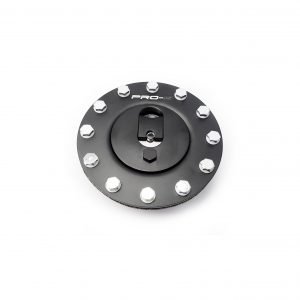Fuel Tanks
- Fuel Tanks
PRO-S Aluminium Foam Filled Fuel Tank
€401.94 – €477.54 Ex. VAT Select options This product has multiple variants. The options may be chosen on the product page - Fuel Tanks
PRO-S Aluminium Surge Tank
€137.34 Ex. VAT Select options This product has multiple variants. The options may be chosen on the product page - Fuel Tanks
PRO-S Aluminium Universal Tank
€109.61 – €137.34 Ex. VAT Select options This product has multiple variants. The options may be chosen on the product page - Fuel Tanks
PRO-S Roll Over Valve
€22.67 – €41.57 Ex. VAT Select options This product has multiple variants. The options may be chosen on the product page
Why it becomes vital to have a clean fuel tank?
Fuel tanks are, in essence, a safe house where you store flammable liquid which in the case of automobiles, is fuel or gasoline. So, keeping the fuel tank free of any contaminants is a necessity. In fact, one needs to ensure that all the other parts around the engine are in top shape and will prevent dirt or debris from even reaching the fuel tank. This can even be a small part such as the fuel cap.
But sometimes, it just can’t be prevented. Fuel pumps that pump fuel directly into your tank will sometimes be filled with contaminants like rust and sediments. And while pumps are equipped with strainers or socks, these can only filter to a certain size, specifically 50-100 microns. On the other hand, fuel filters normally only strain out particles up to 10 microns in size. These fuel pumps transfer fuel from the tank to the fuel surge tank which mixes excess fuel from the pressure regulator with new fuel form the fuel tank.
What types of fuel tanks are there?
While fuel tanks can come in various materials like rubber, high-grade plastic and metal, the typical vehicle is only equipped with either of the two:
Metal fuel tanks
Welded from stamped sheets of either aluminum or steel, these tanks are common in most automobiles. Its main purpose is simple: to hold the fuel that will then flow into the engine and get it running. An advantage of these hardy tanks is that they can keep in a generous amount of chemicals like carbon monoxide and sulfur dioxide deemed as harmful. It’s also because of this capacity that they can limit the fuel emissions.
Plastic High-Density Polyethylene (HDPE)
Found in most modern vehicles, HDPE tanks are considered safer than metal tanks and can even hold a larger fuel capacity. Because the material is highly flexible, these fuel tanks can come in various shapes while a smooth build increases the tank’s resistance to breaking or exploding in the event of a crash. On the other hand, its durable material can withstand temperatures higher than 230 degrees Fahrenheit keeping the car from exploding fully during a crash.









